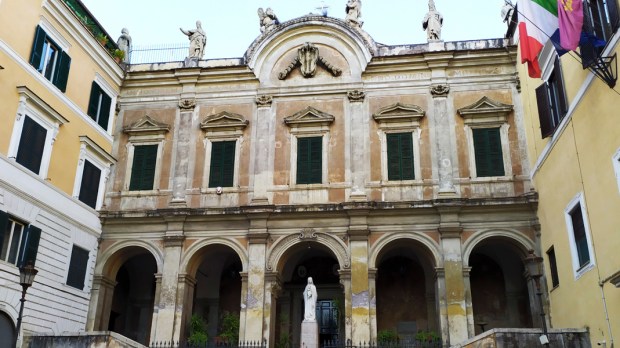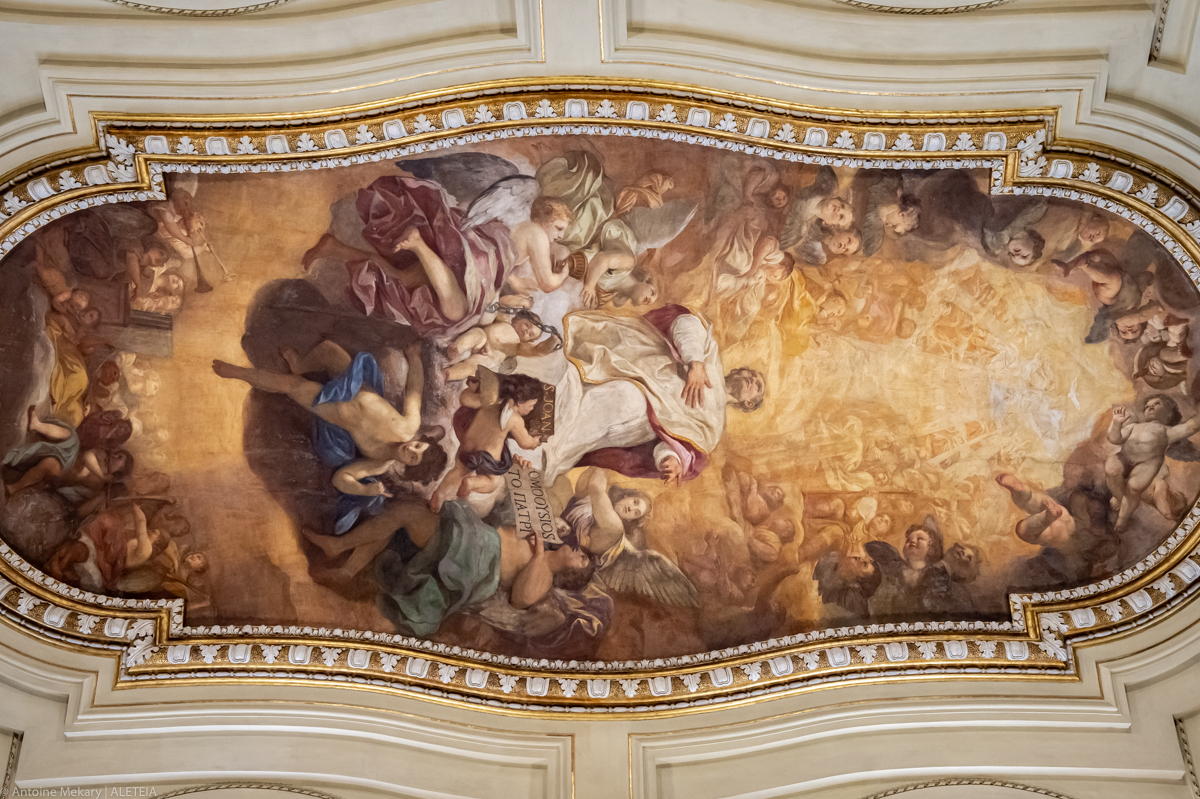Aleteia invites you to a virtual Lenten pilgrimage through Rome’s 42 station churches: one church per day, from February 17 to April 11.
Day 30
St. Eusebius, heresies, ecology: These are three themes of the Basilica of Sant’Eusebio at the Esquiline. Eusebius was a Roman presbyter who fought against the Arian heresy. As a result, he was imprisoned in a room of his house and died of starvation after seven months of imprisonment.
His house became the “titulus Eusebi,” and here in the 8th century a first church dedicated to him was built. In his memory, Gregory XIII established special indulgences for those who visited the church on the day of St. Eusebius (August 4) and prayed for the peaceful living of Christian principles, the eradication of heresies, and the tranquility of the Church.
The church was rebuilt in 1238 by Pope Gregory IX and dedicated to Sts. Eusebius and Vincent. It was completely rebuilt in the 18th century, and on that occasion Raphael Mengs depicted the “Glory of the Martyr Eusebius” in the fresco on the vault of the nave, a masterpiece of neoclassical art that embodies the first dictates of Winckelmann’s aesthetics.
The basilica, which since 1889 has also been a parish, is famous for some activities related to ecology—most recently, the competition for students on integral ecology and sustainability. For about a century, the traditional “blessing of the animals” on the occasion of the feast of St. Anthony the Abbot has been held at this basilica.
The Lenten station this year takes place on the feast day of St. Joseph.
Happy are those who live in your house,ever singing your praise.Psalm 84

Read more:
Yes, there’s actually a St. Corona! And her remains are in Northern Italy
* In collaboration with the Social Communications Office of the Vicariate of Rome.
Read about the tradition of the station churches here. And see previous churches in the pilgrimage here.


